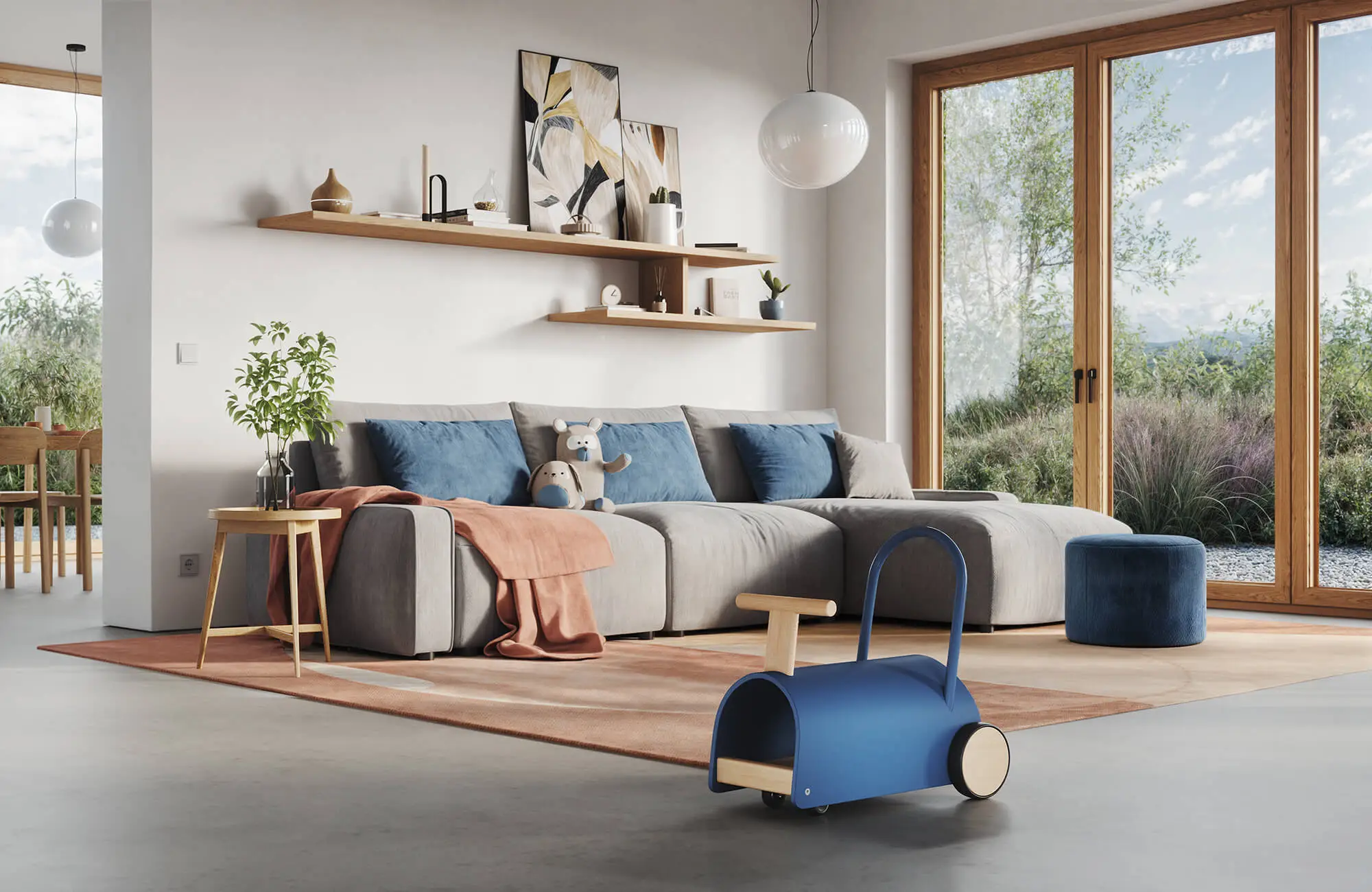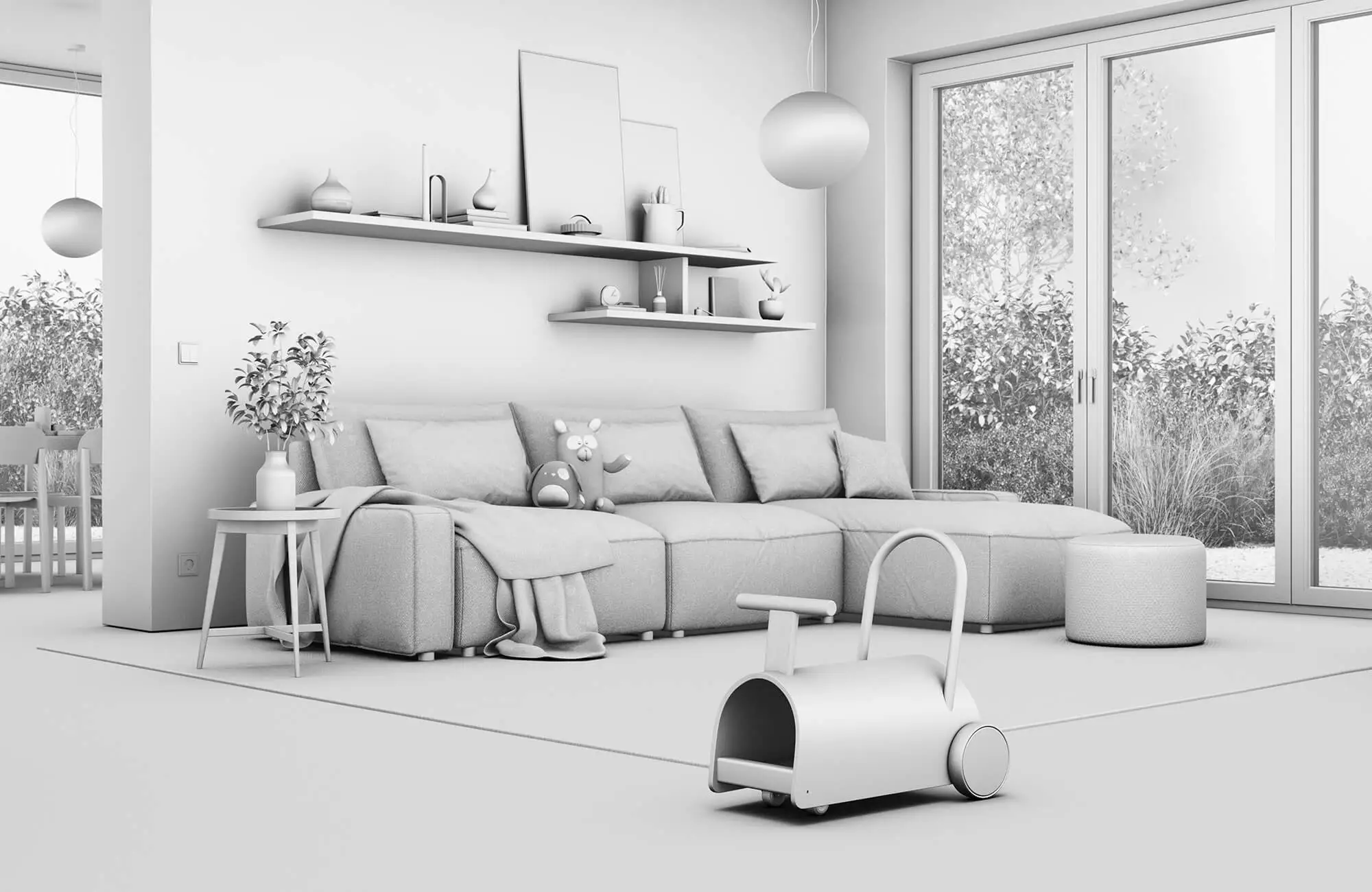What is Ambient Occlusion (AO)?

CGI for strong brand presences
From hero renders to campaign assets: Our 3D studio delivers high-quality 3D images and animations that sell – and seamlessly integrate into your CI. Get a non-binding assessment.
What is Ambient Occlusion (AO)?
Definition of Ambient Occlusion (AO)
Ambient Occlusion (AO) is a rendering technique that simulates contact and corner shadows: areas that receive less ambient light are darkened. This makes models look more plastic and realistic – without full ray-tracing lighting. For marketing renderings, this means more depth, clearer material edges, and a high-quality look with manageable computing effort.

How it works
AO calculates how much a point on a surface is “covered” by ambient light. Typical variations:
- Baked AO-Map: statically baked into the texture (for 3D product images or Low-Poly-Assets) → Texture Baking (Map Baking)
- Screen-Space Ambient Occlusion (SSAO): Real-time effect in post-processing (e.g., in Browser/WebGPU, Game Engines).
- Ray-Traced AO: physically more accurate, but computationally intensive.
You can find more technical details about Ambient Occlusion here: Unreal Engine Docs – Ambient Occlusion
This is how Ambient Occlusion works: AO-Pass vs. final rendering in direct comparison

Want to know how we can visually boost your brand with CGI?
We'll explain the process, effort, and output of CGI product images for your brand communication for your furniture, home & living brand – transparently and without obligation.
Learn more nowAmbient Occlusion vs. Ray Tracing
Ambient Occlusion Workflow
- Create & bake AO-Map – after UV unwrapping, we bake the AO in Linear-Space. More about this in the 3D Modeling section.
- Activate & fine-tune SSAO – test radius, intensity and bias to avoid halos. For real-time use cases, we refer to Augmented Reality with 3D & CGI.
- Compositing – place the AO pass over the beauty render in Multiply mode. You can find our pipeline in the 3D Animation Studio.
- Preview & QA – Adjust the AO strength to match the brand's CI (subtle instead of "dirty"). You can find additional tips in the blog article Shaders for Photorealistic CGI.
- Export – WebP/AVIF for web, TIFF/PNG for print; archive the AO pass separately.
FAQ - Ambient Occlusion (AO)
Do I need Ambient Occlusion if I use Ray Tracing?
Not mandatory. Ray tracing calculates shadows physically correctly. However, AO can be used as an additional pass to emphasize small contact areas - subtle is the keyword here. More physical background in the rendering equation (NVIDIA)
How do I bake an AO map?
Most 3D tools (e.g., Blender, 3ds Max, Cinema 4D) have an AO bake mode. For Blender, see Ambient Occlusion Bake – Blender Manual
What is SSAO?
Screen Space Ambient Occlusion is a post-processing technique that approximates AO from the finished rendered screen content – fast, but less accurate. Details: Unreal Engine Docs – Screen Space Ambient Occlusion
Can I use AO in the browser?
Yes. Many WebGL/WebGPU frameworks have SSAO filters or allow custom shaders. Overview of the API: MDN Web Docs – WebGPU API
Does an Ambient Occlusion Map also enhance surface details like wrinkles or pores?
Nope. AO only calculates shadows in indentations. For fine surface details, you'll need Normal Maps. Both maps complement each other: AO for contact & corner shadows, Normal Maps for microstructure.


